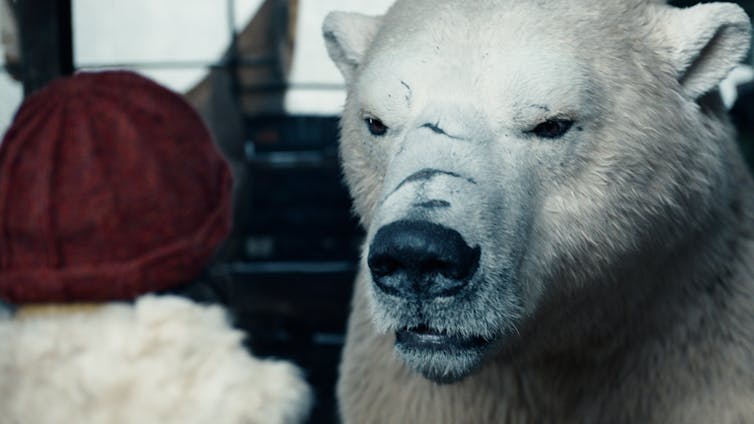 |
| Educating Girls Is The Right Thing To Do - For Them And For The Planet (image via Plan International Canada) |
Plan International Canada, a leading charity on children's and girls' rights, is advocating for governments around the world to include gender equality, human rights and the empowerment of women and girls in their climate change policies and ensure girls' education becomes a key component of climate change strategies.
A recent report published by Plan International called Girls Rights in Climate Change Strategies shows that engaging women and girls in climate change planning and investing in girls' education are powerful yet often ignored strategies to combat climate change. An analysis of 162 Nationally Determined Contributions, which are national plans for meeting agreed global targets on emissions and adaptation, showed limited attention to women and girls overall, as well as the lack of girls' education as a strategic component. This includes a quality, gender transformative education that fosters the inherent agency of girls to take a leadership role in climate action.
A recent report published by Plan International called Girls Rights in Climate Change Strategies shows that engaging women and girls in climate change planning and investing in girls' education are powerful yet often ignored strategies to combat climate change. An analysis of 162 Nationally Determined Contributions, which are national plans for meeting agreed global targets on emissions and adaptation, showed limited attention to women and girls overall, as well as the lack of girls' education as a strategic component. This includes a quality, gender transformative education that fosters the inherent agency of girls to take a leadership role in climate action.
Girls' rights and education are powerful solutions to climate change
- Girls education is impactful for both climate change action and gender equality outcomes, with each complementing the other, in multiple ways including:
- Empowering and quality education increases girls' overall opportunities for leadership, which is increases their ability to influence change in power structures that have traditionally bred inequality and unsustainable natural resource management.
- Quality education grows knowledge of climate change, further helping girls take the lead in helping their families and communities adapt to its impact.
- Quality education and training enhances a girl's "green skills", preparing her to participate equally in and lead in traditionally male-dominated green sector jobs that support sustainable social, economic and environmental outcomes.
- Educated girls are less likely to marry or become pregnant before they are 18 and they earn more over their lifetime than uneducated girls.
Additional findings from national climate change plans outlined in Girls' Rights in Climate Change Strategies include:
- While 43% of countries referenced women or gender, it was largely in the context of women as a vulnerable group rather than contributors to climate change mitigation or adaptation.
- Only three countries' Nationally Determined Contributions make explicit reference to girls; both in the context of their needs rather than competencies and there is only one clear reference to girls' education.
- 68% of Nationally Determined Contributions include education but normally in vague terms, including awareness raising, not targeted at young people or part of a national curriculum to combat the climate crisis.
- No Nationally Determined Contribution formally recognizes the contributions that investment in girls' education could make toward their climate strategy.
- Climate strategies overall concentrate on technological fixes, ignoring social concerns and the contributions that people, particularly girls and young women empowered by education and information, might make.
Quotes
"We're in a full-blown climate crisis and every tool at our disposal must be used to mitigate the risks we are all facing," says Tanjina Mirza, Chief Programs Officer, Plan International Canada. "Girls education is one of the most powerful opportunities for growing a girl's future potential and her ability to lead in climate justice impact, yet it's absent from almost all national climate commitments and strategies. This needs to change."
"Girls are on the frontlines of climate disasters, facing the devastating risks of early and forced marriage, being pulled out of school to help earn an income or because their family has been forced to migrate, and eating least and last when food shortages arise due to extreme weather events," says Stu Solomon, Plan International Canada's Senior Advisor on Economic Empowerment and Resilience. "But girls are also at the forefront of solutions. Through their inherent individual and collective agency, they can lead climate change action for themselves, their families and their communities and must be fully engaged in every step of climate change strategy and policy-making."
"We, the next generation, are part of the solution. We want to be a partner to policy makers in finding sustainable solutions. The future depends on us. Let's get to work - for us, for Dhaka, for the planet," says 19-year-old girl Sohagi, who lives in a slum in the Bangladesh capital of Dhaka. The entire area where she lives is flooded with dirty water as the monsoon season sets in. Sohagi has long been involved in several development projects organized by Plan International. She is part of a youth group that works to call on the authorities asking that they give priority to improving conditions in the slum.







































